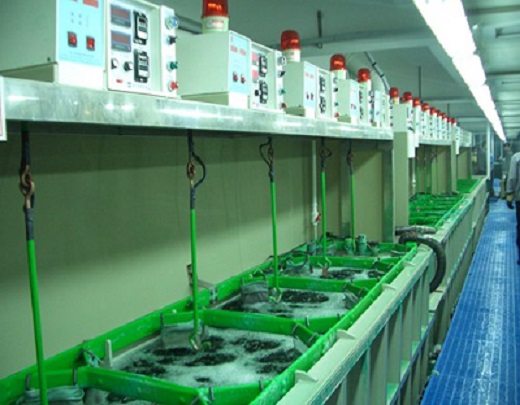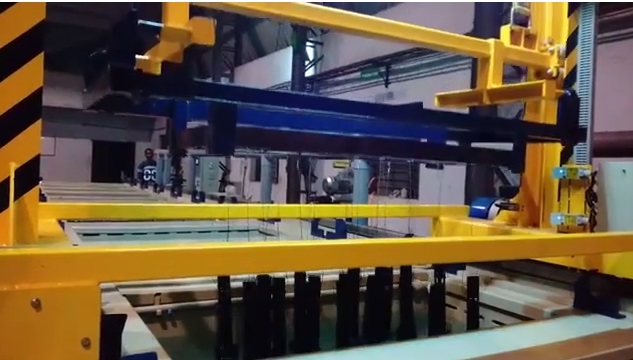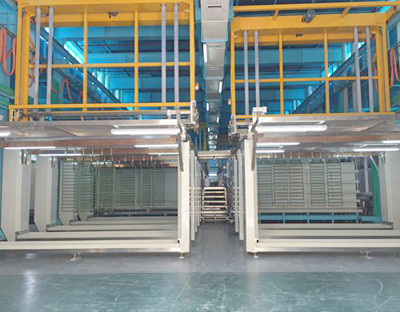The treatment and reuse of electroplating wastewater play a vital role in saving water resources and protecting the environment. This article reviews the advantages and disadvantages of various electroplating wastewater treatment technologies and the application of some new materials in electroplating wastewater treatment.
1. Chemical precipitation method
The chemical precipitation method is to convert the dissolved heavy metals into water-insoluble compounds by adding chemicals into the wastewater, and then separate them from the water, so as to achieve the purpose of removing heavy metals. The chemical precipitation method is widely used in electroplating wastewater treatment because of its simple operation, mature technology, low cost, and the ability to remove multiple heavy metals in wastewater at the same time.
Limitations of the chemical precipitation method. With the improvement of sewage discharge standards, the traditional single chemical precipitation method is difficult to treat electroplating wastewater economically and effectively, and is often used in combination with other processes.
2. Redox method
Chemical oxidation method:
The chemical oxidation method is particularly effective in treating cyanide-containing electroplating wastewater. The method oxidizes the cyanide ion (CN-) in the wastewater to cyanate (CNO-), and then oxidizes the cyanate (CNO-) to carbon dioxide and nitrogen, which can completely solve the problem of cyanide pollution.
Chemical reduction method:
The chemical reduction method is mainly aimed at wastewater containing hexavalent chromium in the treatment of electroplating wastewater. The method is to add a reducing agent (such as FeSO, NaHSO3, Na2SO3, SO2, iron powder, etc.) to the wastewater to reduce the hexavalent chromium to trivalent chromium, and then add lime or sodium hydroxide for precipitation separation. The above-mentioned ferrite method can also be classified as a chemical reduction method.
3. Electrochemical method
Electrochemical method refers to the removal of heavy metal ions and organic pollutants in wastewater through a series of reactions such as oxidation-reduction, decomposition, precipitation, and air flotation under the action of electric current.
The main advantages of this method are the fast removal rate, the complete interruption of the metal link in the coordinated state, the easy recycling of heavy metals, the small footprint, and the small amount of sludge, but its plate consumption is fast, and the power consumption is large. The removal effect of wastewater is not good, and it is only suitable for small and medium-scale electroplating wastewater treatment. Electrochemical methods mainly include electrocoagulation, magnetic electrolysis, and internal electrolysis.
4. membrane separation technology
Membrane separation technology mainly includes microfiltration (MF), ultrafiltration (UF), nanofiltration (NF), reverse osmosis (RO), electrodialysis (ED), liquid membrane (Lv), etc., using the selective permeability of the membrane to Separate and remove pollutants. The method has good removal effect, can realize heavy metal recycling and effluent reuse, has a small footprint and no secondary pollution. It is a promising technology, but the membrane is expensive and easily polluted.
5. Ion exchange method
The ion exchange method uses ion exchangers to exchange and separate harmful substances in wastewater. Commonly used ion exchangers include humic acid substances, zeolites, ion exchange resins, and ion exchange fibers. The operation of ion exchange includes four steps: exchange, backwash, regeneration and cleaning. This method has the characteristics of simple operation, recyclable heavy metals, low secondary pollution, etc., but the cost of ion exchanger is high, and the consumption of regenerant is large.
6.Evaporative concentration method
Evaporative concentration method is to evaporate electroplating wastewater by heating, so that the liquid is concentrated to achieve the effect of reuse. It is generally suitable for the treatment of wastewater with high concentration of heavy metals such as chromium, copper, silver, nickel, etc. It consumes a lot of energy and is not economical when it is used to treat wastewater with low concentration of heavy metals. In the treatment of electroplating wastewater, the evaporation concentration method is often used together with other methods, which can realize a closed loop and has good results, such as the combined use of an atmospheric evaporator and a countercurrent rinsing system. The evaporative concentration method is simple in operation, mature in technology, and can be recycled, but the cost of the concentrated dry solid disposal is high, which restricts its application, and is currently only used as an auxiliary treatment method.
7.Biological treatment technology
Biological treatment method uses microorganisms or plants to purify pollutants. This method has low operating cost, small amount of sludge, and no secondary pollution. It is the best choice for low-concentration electroplating wastewater with large water volume. Biological methods mainly include biological flocculation method, biological adsorption method, biochemical method and phytoremediation method.
8.Adsorption
The adsorption method uses porous materials with a large specific surface area to adsorb heavy metals and organic pollutants in electroplating wastewater, so as to achieve the effect of sewage treatment. Activated carbon is the earliest and most widely used adsorbent. It can adsorb a variety of heavy metals and has a large adsorption capacity. However, activated carbon is expensive and has a short service life. It needs regeneration and the regeneration cost is not low. Some natural cheap materials, such as zeolite, olivine, kaolin, diatomite, etc., also have good adsorption capacity, but due to various reasons, they have hardly been applied in engineering.
9.Photocatalytic technology
Photocatalytic treatment technology has the characteristics of low selectivity, high treatment efficiency, thorough degradation products, and no secondary pollution.
10.Heavy metal trapping agent
Heavy metal trapping agent is also called heavy metal chelating agent. It can produce strong chelation with most of the heavy metal ions in wastewater. The polymer chelate salt is insoluble in water, and heavy metal ions in wastewater can be removed by separation. Heavy metal trapping agents have great practicability due to their high efficiency, low energy, and relatively low processing costs.
Summarize:
The composition of electroplating wastewater is complex, so it should be treated in different stages as much as possible. When selecting treatment methods, the advantages and disadvantages of various methods should be fully considered, and the comprehensive application of various water treatment technologies should be strengthened to form a combined process to maximize strengths and avoid weaknesses.
Heavy metals have great recycling value and are highly toxic. In the process of electroplating wastewater treatment, heavy metal recycling processes should be used to reduce emissions as much as possible.
Due to the large output of chemical precipitation method sludge, the high energy consumption of electrochemical method, the high cost of membrane module of membrane separation technology and the susceptibility to pollution, as far as the existing electroplating wastewater treatment technology is concerned, energy saving, high efficiency and non-uniformity should be adopted. The direction of secondary pollution is improved.
At the same time, it can be combined with computer technology to realize intelligent control. It can also combine materials science, biology and other disciplines to develop new materials that are more suitable for the treatment of electroplating wastewater.







 Jul. 17, 2020
Jul. 17, 2020 



